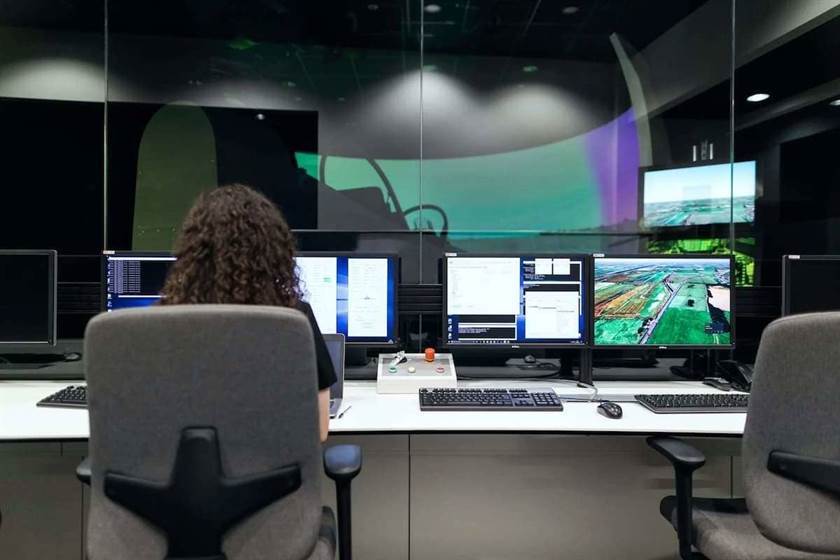Like CMMI, certification with ISO 9000 does not guarantee the quality of the end result, only that formalized business processes have been followed. The term was first used to describe a software development process introduced by James Martin in 1991. According to Whitten , it is a merger of various structured techniques, especially data-driven information technology engineering, with prototyping techniques to accelerate software systems development. Most modern development processes can be vaguely described as agile.

The P-CMM adapts the concepts of the CMM and focuses them on developing the organisation’s human resources. It is a framework for managing the people involved in the software development process. CMMI’s goal is to improve the whole process capability in one’s organisation, but it depends on an assumption, process is the base of product’s quality. CMMI tells the company HOW TO improve the process and its capability. Most of the time, BPM helps teams identify bottlenecks, ways to automate manual work, and strategies to improve inefficiencies.
RISK MANAGEMENT IN DISTRIBUTED SOFTWARE DEVELOPMENT: A PROCESS INTEGRATION PROPO…
It describes various basic and generic processes used in the different phases of production. Basic practices are the essential activities of a specific process, while generic practices are the activities required to manage a process or improve its capability. Software Process Improvement and Capability Determination is an international framework to assess software development processes.

Further enhancements are achieved by pilot testing of innovative ideas and planned insertion of new technology. Moreover, in this step, the gap between the current level and the target level should be planned in terms of a set of activities to reach that target. The spiral model, https://www.globalcloudteam.com/ first described by Barry Boehm in 1986, is a risk-driven software development process model which was introduced for dealing with the shortcomings in the traditional waterfall model. The exact number of loops of the spiral is unknown and can vary from project to project.
Continue learning about project management
Therefore, it is repeatable within the implementing project, though not necessarily transferable across the organisation. PSP/TSP basically takes CMMI’s principles and applies them to software development processes, providing specific solutions to specific problems that we most likely will encounter when working on a project. The primary goal of https://www.globalcloudteam.com/glossary/software-process-improvement/ being Agile is empowered the development team the ability to create and respond to change in order to succeed in an uncertain and turbulent environment. Agile software development approach is typically operated in rapid and small cycles. This results in more frequent incremental releases with each release building on previous functionality.

Each member gathers personal performance data and the whole team plans, estimates, and controls the quality of the software produced based on said data. Not only the engagement but their involvement to be a part of that change and understand why it is important and how they will benefit from that. It was mentioned before that the SPI project is a change management project which is not dealing only with the process, it affects people and the organizational culture.
Basic Principles of Process Improvement
“Why wasn’t there a new process for the new product?” Because the project template for launching new products doesn’t include stress testing the new packaging. “Why did the current standard process indicate that this testing was sufficient?” Because this process was created for a previous product, and not this current product that is coming back damaged. “Why was the packaging not sufficient enough to protect the products?” Because the team testing packaging did not test past a certain level of stress. TQM relies heavily on data-driven decisions and performance metrics. During the problem solving process, you use success metrics to decide how you can improve a process. The RAD model accommodates changing requirements, reduces development time, and increases the reusability of components.
Designate a process manager and assign supporting roles as appropriate. The Agile movement proposes alternatives to traditional project management. The incremental build model is a method of software development where the model is designed, implemented and tested incrementally until the product is finished. The product is defined as finished when it satisfies all of its requirements.
What are the different SPI methods?
Process interfaces need to be defined to ensure pertinent data flows easily across group boundaries in a straightforward and timely manner. Making consistent, small changes to your life is often more effective than trying to change everything at once. How much you change and how quickly is determined by your goals and action plan – set a reasonable pace. Perform an informal, yet thorough assessment to take an honest look at the current practices of each contributing group. Identify bottlenecks and inefficiencies, often caused by poor communication and information exchange. See software development trends to watch for and how demand is increasing for low-code app development platforms.
- This document collects information on the current capability of the organization’s processes.
- The agile process model encourages continuous iterations of development and testing.
- It should not be performed until all the required inputs are available.
- Software prototyping is about creating prototypes, i.e. incomplete versions of the software program being developed.
- Agile software development approach is typically operated in rapid and small cycles.
In case of SW-CMM, organisation is assessed on the scale 1-5 similar to CMM maturity levels. SW-CMM model allows organisation to verify capability for software development and maintenance; it focuses on project management. SW-CMM was intended to make available assessment of the processes enhancement with currently existing processes in the organisation to recognize setbacks for organisational processes and software quality improvements. I have worked to promote software process maturity since its origins. Thankfully, senior executives did a very good job of communicating the benefits of software process improvement and provided the financial support required to increase our maturity levels. This is translated into building support for process improvement initiatives and driving their successful implementation.
All Plans
These details are generally not dictated by the choice of model or general methodology. Big Bang methodology – an approach for small or undefined projects, generally consisting of little to no planning with high risk. A Rough Order of Magnitude Estimate Quick Ref Guide was created to show specific software tool screens and related data used in each step. An estimation process management checklist was also created to get feedback from practitioners and assess the thoroughness of activities performed.

Management’s enthusiasm for and belief in process improvement will be key to a successful implementation. In fact, it is the folks doing the jobs that need to be done who know what’s not working and propose the changes they’d like to see. Organizations can initiate and sustain continuous improvements in software processes.
Software Project Management
The Systems Engineering Capability Maturity Model (SE-CMM) concerns the description of the essential elements in an organisation’s systems engineering process that is required to ensure good systems engineering. SE-CMM provides a reference for comparing actual systems engineering practices against these essential elements. SE-CMM allows an organisation to select a specific process area and improve relative to it. By use of capability levels it is possible to characterize improvements that are relative to an individual process area. According to the SE-CMM model the quality of a product is mainly based on the process and technology used in the development of the product .